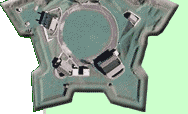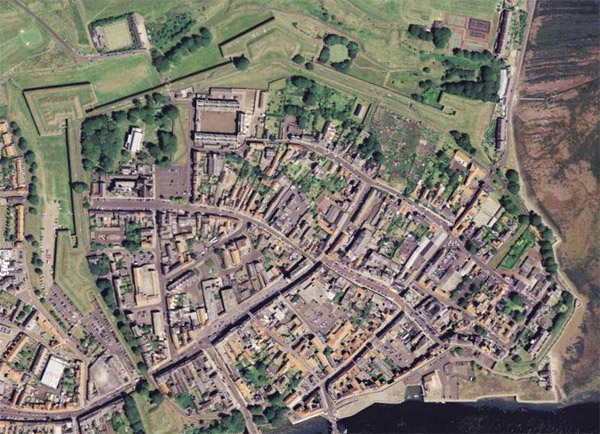
 |
 |
Berwick Castle Berwick-upon-Tweed |
 |
 |
 |
 |
 |
||
 |
In the 7th and 8th centuries, the Christian kingdom of Northumbria, in what is today northern England, was one of the shining lights of the Dark Ages. Northumbria's capital was at Bamburgh, about 20 miles south of Berwick, from the name bere-wic, or "barley-farm". In 1018 Northumbria lost the Battle of Carham to the Scots, and all Northumbrin land north of the river Tweed became the possession of Scotland. King David I (1085-1153) made Berwick one of Scotland's four royal boroughs and built the first Berwick Castle around 1120, which allowed Berwick to become Scotland's largest and wealthiest town by the 13th century. Berwick was a major international commerce hub, doing business with Germany and Flanders. Scottish currency was minted at Berwick. All of this wealth was naturally attractive to England, and between 1147 and 1482 Berwick changed hands between England and Scotland 13 times: Perhaps only Jerusalem, which has changed hands about a bazillion times, and Winchester Virginia, which was swapped between North and South 73 times during the US Civil War (1861-1865), have been more tossed about than Berwick. While all sacking, looting and conquering is usually pretty unpleasant, the capture of Berwick in 1296 by England's King Edward I (1239-1307) was particularly bad. After doing his best to devastate the town, he refortified Berwick Castle against future Scottish attack. Berwick's once-fruited fields were laid waste by being on the border betwixt two warring nations for the next few centuries. In 1482, England's future King Richard III (1452-1485) captured Berwick for the last time from Scotland. The refortification of Berwick Castle was the single most costly undertaking during the reign of Queen Elizabeth I (1533-1603), using the latest in the trace italienne style of fortification. Berwick was now ready to defend the kingdom from anything France or Spain might try to throw at it from the sea. Berwick was never formally part of Scotland or England until 1707, when the two joined at last. Even after this union, several proclamations referred to "England, Scotland and the town of Berwick-upon-Tweed." One of these was Queen Victoria (1819-1901)'s declaration of war against Russia in 1853, which she signed as "Victoria, Queen of Great Britain, Ireland, Berwick-upon-Tweed and all British Dominions". The Treaty of Paris that ended the Crimean War in 1856 failed to mention Berwick, however, so technically Berwick-upon-Tweed existed in a state of war with Russia for over a century. In 1966, a Soviet official and Robert Knox, mayor of Berwick, formally signed a peace treaty. Knox is reported to have made the statement, "Please tell the Russian people that they can sleep peacefully in their beds." Modern guns were emplaced to defend Berwick during the First (1914-1918) and Second (1939-1945) World Wars, but fortunately were never needed. Much of Berwick Castle was demolished in the 19th century to make way for a railroad, but the fortifications that remain today are among the best preserved examples of the type, upon which the Berwickians politely invite you to take a leisurely stroll, should it please you. |
 |
 |
||
|
|
|||||||
Info Source 1
Info Source 2
Info Source 3
Info Source 4 Info Source 5 Info Source 6 Info Source 7 Info Source 8 Info Source 9 Info Source 10 Info Source 11 Info Source 12 Info Source 13 Thanks to Google Maps for the image! ©2010 starforts.com |
 |